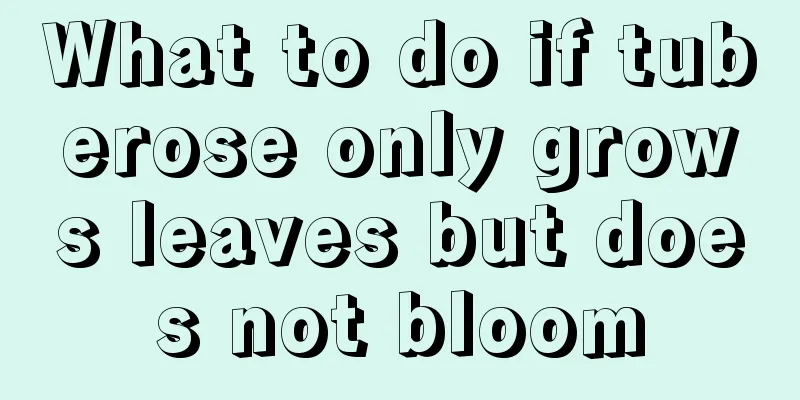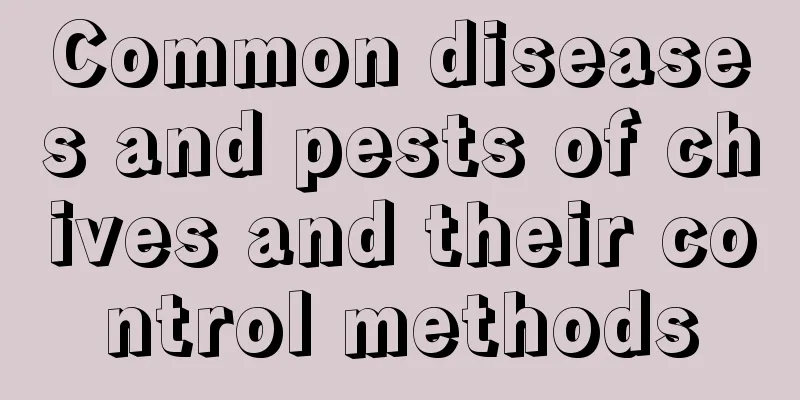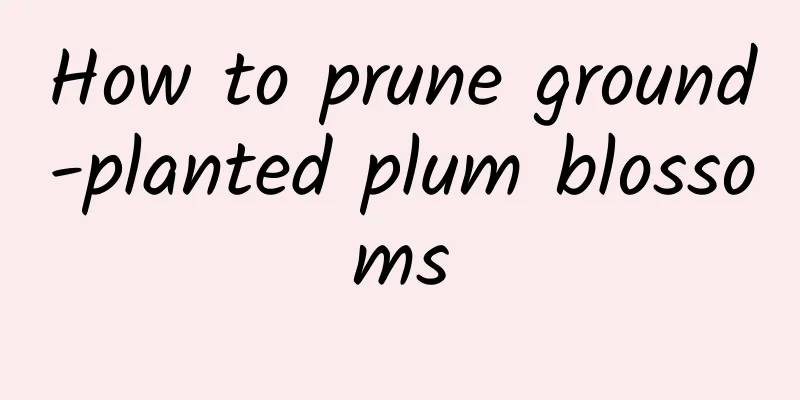What to do if tuberose only grows leaves but does not bloom

The reason why tuberose only grows leaves but does not bloomThe plant has not yet reached flowering ageThe flower buds of tuberose have already formed on the bulbs one year before planting. The reason why only leaves grow but no flowers bloom may be that the planted plants are too small and have not reached the flowering age, so they do not bloom. Digging bulbs at the wrong timeThe bulbs are dug out too early and the flower buds have not yet differentiated inside the tubers, so only leaves will grow but no flowers will bloom after planting. Digging the bulbs too late can also cause the tuberose to only grow leaves but no flowers. The temperature is too low in winter, and the tubers are exposed to cold and freezing in the soil, causing the flower buds inside the tubers to be frozen and may even rot. This situation can also cause the tuberose to only grow leaves but no flowers. Improper storage of bulbs during winterImproper storage of tubers in winter, placing the bulbs in a dry cellar after drying, or burying them tightly with straw and soil will also result in fewer flowers. OverfertilizationApplying too much nitrogen fertilizer after planting will cause the stems and leaves of tuberose to grow too long. This situation will cause tuberose to bloom less frequently, or even not bloom at all in severe cases. What to do if tuberose only grows leaves but does not bloomChoose good varietiesWhen choosing tuberose, you should choose those with larger and healthier tubers for planting. Proper storage in winterWhen storing tubers in winter, the room temperature should be maintained at 25℃-26℃. The moisture in the tubers will be gradually reduced until the outer skin becomes dry and wrinkled. Then the temperature should be lowered by 15℃-20℃ until they are taken out of the cellar in the next spring. To store tubers in winter, you can also choose to hang the tubers indoors and place them under the stove for smoking. Baking can make the tubers drier, thus forcing the tubers of tuberose to enter a dormant period, which is beneficial for growth and differentiation of flower buds after planting in the spring of the following year. Reasonable fertilizationApply less fertilizer in the early stage of planting. Wait until the flower stems are about to emerge or before flowering, then apply fertilizer and also apply top dressing. Generally, apply it once one month after planting, once before flowering, and then once every one and a half months or two months. |
<<: What to do if the creeping grass grows too tall
>>: Why do banyan trees drop leaves?
Recommend
Daisy cultivation methods and precautions Daisy planting and maintenance methods
Daisy itself is a relatively easy-to-grow flower ...
What to do if Amaryllis only grows leaves but does not bloom
1. Reasons 1. Lack of nutrients The plant needs a...
How to water a newly planted cherry tree?
As the saying goes, " Cherries are delicious...
How to prune the striated bell flower
When to prune the striated sycamore When pruning ...
Planting methods and techniques of four-season strawberries
1. Planting time Four-season strawberries are gen...
The harm of using orange peels to water flowers, what flowers should not be watered
1. The harm of using orange peel to water flowers...
Flowerpot landscaping is no longer far away, it only takes one step to make you cry
Looking at the fallen flower pot, There are also ...
Can the seeds of snake fruit be planted? How to plant snake fruit seeds
Can the seeds of snake fruit be planted? The seed...
What to do if the leaves of Chlorophytum comosum turn yellow
1. Supplement nutrients Reason: Chlorophytum como...
When is the best time to fertilize Clivia for flowering (fertilization during the growth period is the key)
When growing Clivia, you need to apply fertilizer...
Can cooked peanut shells be used as fertilizer?
Cooked peanut shells as fertilizer Cooked peanut ...
Can rooting powder be used to water flowers directly? How to use it correctly
Can rooting powder be used to water flowers direc...
What to do if bicolor jasmine does not bloom
When does it bloom? Bicolor jasmine can bloom twi...
Cultivation method of flat chrysanthemum Panax notoginseng
1. Soil Panax notoginseng is suitable for growing...
How to make orchid leaves turn green, how to treat leaf loss of green
1. How to make orchid leaves green If you want it...









